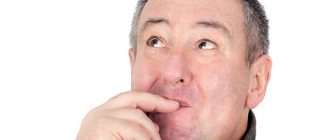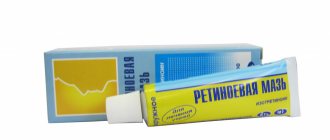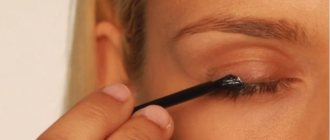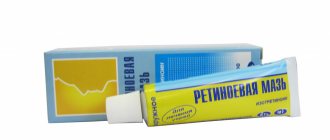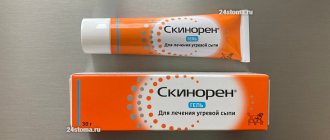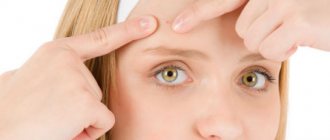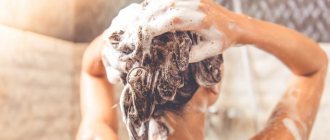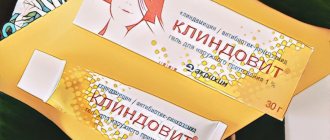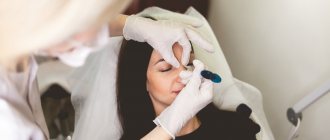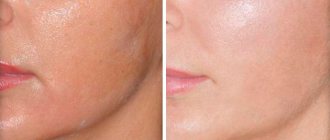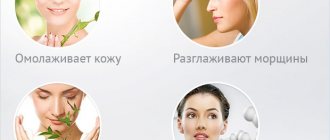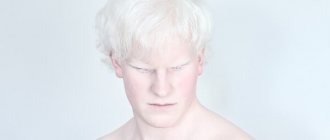Do you often wonder what the names of popular skin treatment products mean? How many of us read the ingredients on the back of the package to the end? In order not to give fantasy priority over common sense, let's clarify what we put on our face, striving for its beauty and healthy skin. Naturally, we will attract real professionals and experienced users to help.
The ingredient we'll be talking about today is designed to fight acne and is called benzoyl peroxide or benzoyl peroxide. The most famous and accessible drug containing it is baziron for acne.
How it works?
Thanks to the sebostatic effect of benzoyl peroxide, basiron
- reduces sebum secretion,
- comedolytic effect helps cleanse and narrow the mouth of the pores,
- The antibacterial effect prevents bacteria from multiplying.
Simply put, it creates conditions that are impossible for bacteria to live. The drug releases additional oxygen molecules into the subcutaneous tissue, where bacteria that cause acne live and actively reproduce.
The strains of bacteria that cause acne are anaerobic microorganisms. This means that they do not like oxygen. The drug simply kills them, reducing the number of colonies and leaving little chance for acne to form.
Back to the beginning of the article
Baziron®️AS for teenagers
Juvenile acne is the “work” of millions of propionic acid bacteria (Propionibacterium acnes, modern name - Cutibacterium acnes), multiplying in the mouths of hair follicles. They feed on the secretion of the sebaceous glands, which are distributed to a greater or lesser extent throughout the skin.
In adolescence, during the period of hormonal shifts, excess secretion of sebum occurs, and bacteria actively multiply. Inflammation begins, which is aggravated by blockage of the sebaceous gland ducts with a large number of keratinized epithelial cells. In such cases, a drug such as Baziron®️ AS can come to the rescue, which, by acting on bacteria, fights the key cause of the disease and thereby helps reduce the visible signs of acne on the skin in the form of various rashes.
Release form and dosage Baziron® AS
In our country, Baziron® AS gel is available in two dosages: Baziron® AS 2.5% and Baziron® AS 5%. The therapeutic effect of both gels is comparable, but the 2.5% dosage is more “gentle” on the skin and “works” more delicately. If the patient has no previous experience of using the drug Baziron® AS, it is recommended to start treatment with this dosage.
In general, Baziron® AC 2.5% is recommended for sensitive skin prone to irritation. Baziron® AC 5% is optimal for people with oily, problem skin.
If your skin type is in doubt, then it is better to use Baziron® AC gel 2.5% during the first four weeks. After four weeks, if signs of acne remain and the skin responds well to treatment, then you can switch to a gel with a higher concentration - 5%.
How long to use
Acne is treatable, but there is a high probability of recurrence, so you should always have the remedy on hand. This way you can keep the situation under control and prevent it from getting worse when the first signs of concern appear. For prevention purposes, it can be used once a day at night.
If so-called tolerance or addiction occurs, gel treatment should be combined with exfoliation (peeling) using a special sponge or facial brush.
And finally, a little-known fact and a common myth.
Many people don't know that peroxide can leave fade marks on clothing.
Make sure that the gel does not drip onto a colored T-shirt or your favorite dressing gown.
A common myth is that benzoyl peroxide is linked to cancer. Scientists deny these rumors; the substance is not a carcinogen.
Back to the beginning of the article
Symptoms and treatment
Most of those who have encountered negative side effects of Baziron AS note the following symptoms:
- redness of the skin at the sites where the drug was applied, and this is not a slight redness, but a very bright color that only goes away within a few weeks;
- dry skin - most often associated with incorrect concentration of the product applied to it, that is, by drying out acne and other manifestations of malfunction of the sebaceous glands, Baziron AS simply “overdid it”;
- peeling of the skin - many note that if you are allergic to Baziron, the top layer of the epidermis simply begins to crumble;
- swelling is a common manifestation of an allergic reaction; swelling under the eyes often occurs;
- allergic dermatitis - manifested not only by redness of the skin, but also by more serious symptoms in the form of the formation of blisters on the skin with a clear liquid inside.
If during use of the product at least one of the above symptoms occurs, this indicates that Baziron AS cream is not suitable for you due to hypersensitivity to its components.
It is necessary to stop using it as soon as possible, begin symptomatic treatment of allergies, take antihistamines (Zyrtec, Claritin, Erius, etc.), and solve skin problems using more suitable and safe means.
Before the skin symptoms of allergies go away, it is necessary to take care of the skin using gentle products: micellar water, products with dexpanthenol.
Cautions when using the product
Cream and gel are contraindicated in case of hypersensitivity to azelaic acid or excipients from the composition of the drugs.
In children:
- Do not use both forms of the drug to combat acne until the age of 12;
- not prescribed for the treatment of rosacea and hyperpigmentation in adolescents under 18 years of age.
When diagnosed with bronchial asthma, drugs are prescribed with caution.
The manufacturer of the products warns about the possible occurrence of side effects:
- most often possible: an unpleasant burning sensation and itching, local redness of the skin, peeling of the top layer of skin, tightness and dryness;
- hypersensitivity reactions - swelling of the eyes and face, Quincke's edema, bronchospasm;
- deterioration of the condition - manifestations of seborrhea, discoloration of skin areas, increased appearance of acne.
If the condition worsens or discomfort occurs during the course of treatment, you must stop the drug and visit a doctor.
What can replace Baziron AC?
If you are allergic to Baziron AS cream, then you can try its analogues, which contain exactly the same active ingredient:
- Proderm;
- Eclaran;
- Desquam.
If the allergic reaction is associated specifically with benzoyl peroxide (the active ingredient of these creams), then it is necessary to choose drugs that do not contain it. For example, OK skin care products.
Despite the fact that many plants are allergens, using traditional skin care methods often helps to cope with acne or acne.
- For example, a decoction of chamomile or green tea has worked well, which can be used in the form of lotions or wiped on the face with cotton swabs soaked in the decoction.
- You can also freeze herbal infusions and wipe your face with the resulting ice cubes.
- A decoction of calendula flowers also helps well, which can be used in the above ways.
- Every pharmacy has an affordable and cheap product - calendula tincture. This drug contains alcohol, so it should be used with caution to treat skin problems, but it disinfects the epidermis well and dries out acne.
Additional Information
When using a cream or gel, you should be careful not to get the composition on the mucous membranes of the mouth, eyes, or open wounds. If this happens, the accidental contact site must be rinsed with plenty of water.
Skinoren cream is effective only in the treatment of melasma located in the epidermis and dermis. The drug has no effect on those located only in the dermis.
When treating rosacea, you should avoid using cosmetics that contain alcohol, abrasives, or exfoliants.
Baziron AS
Baziron AS (active ingredient - benzoyl peroxide) is an antiseptic for the treatment of acne. Almost every person has had the misfortune of encountering the problem of acne, i.e. eels. And if for some they may take the form of isolated transient rashes, then for others everything is much more severe. Acne most often occurs between the ages of 12 and 24 years. Then the incidence curve goes down, and after 25 years, acne occurs in only 10% of people. Due to the anatomical features of the face, men are more likely to suffer from acne. It is believed that the development of acne is based on two interrelated mechanisms: androgenic hyperstimulation of the sebaceous glands (which entails hyperproduction of sebum) and follicular hyperkeratosis (as a result of which the evacuation of sebum is disrupted and aerobic microflora begins to multiply intensively). Pathogenic bacteria in the follicles of the sebaceous glands trigger a series of immune-inflammatory reactions that destroy the walls of the glands, which, in turn, leads to the release of their contents into the dermis with the formation of nodular-pustular or nodular-cystic elements. In addition, pathogenic aerobes (for example, Propionbacteria acne) secrete proteases, lipases, hyauuronidase and promote the formation of free fatty acids, which shifts the skin pH to the alkaline side and reduces the bactereostatic potential of sebum. The basic medications for the treatment of nodular pustular acne (also called papulopustular acne) are systemic or local antibiotics. A significant disadvantage of the latter is the loss of their effectiveness with prolonged use due to the formation of resistance of microorganisms and the development of allergic reactions. In individuals with already formed resistance to external antibiotics, insensitivity to systemic antibacterial drugs is also observed. In this regard, there is an urgent need to use alternative topical antimicrobial drugs to antibiotics that are effective against acne of inflammatory origin. In recent years, the drug baziron AS has become increasingly popular among medical practitioners.
Its exclusivity lies in the combination of pharmacological and cosmetic properties. Benzoyl peroxide, the active ingredient of the drug, is a powerful oxidant and, upon contact with the bacterial membrane, exhibits a pronounced bactericidal effect. Benzoic acid formed during the breakdown of benzoyl peroxide inhibits the growth and development of bacteria, i.e. acts bacteriostatically. It does not accumulate in tissues, is not absorbed into the systemic circulation, and is excreted in its original form by the kidneys. The anti-inflammatory effect of benzoyl peroxide is due to the destruction of free fatty acids and inactivation of free oxygen radicals in the inflammatory focus. Being a peroxide in its chemical structure, benzoyl peroxide also has a whitening effect, which is expressed in the discoloration of post-inflammatory hyperpigmented spots and scars. The acrylate copolymer of the gel base of Baziron AC actively adsorbs sebum, suppressing seborrhea and reducing oily skin by 35%. Glycerin, which is part of the drug as an excipient, softens and moisturizes the skin as it is released, neutralizing the irritating effect of the active substance. Baziron AS is active against the main representatives of pathogenic microflora sown in patients with acne: Staphylococcus epidermidis and P. acnes. Resistance to the drug does not develop, which allows it to be used as part of long-term drug courses. Laboratory studies have shown that benzoyl peroxide inhibits the growth of P acnes twice as effectively as topical forms of clindamycin and erythromycin. The success of anti-acne therapy is based on the duration of drug use. A study conducted by domestic scientists on the basis of St. Petersburg State Medical University named after. acad. I.P. Pavlova demonstrated that a consistently positive effect from the use of basiron AC was achieved only with regular pharmacotherapy for 4-6 months.
Types of the drug Skinoren
Skinoren is produced only for the purpose of application to problem skin. The pharmacy sells gel and cream of the same name.
The main component in both drugs is azelaic acid. One gram of gel contains 150 mg of acid, one gram of cream contains a little more - 200 mg.
The 15% gel also contains: triglycerides, sodium hydroxide, lecithin, propylene glycol, disodium ededate, polyacrylic and benzoic acids, polysorbate and purified water.
The gel is a mass of grayish or slightly yellowish color with a weak medicinal odor, opaque. You can buy it in tubes of 15, 30 or 50 g, placed in a box complete with instructions.
Cream 20% additionally contains: benzoic acid, glycerol, macrogol glyceryl stearate, propylene glycol, a mixture of cetostearyl alcohol and coconut oil fatty acid glycerides, cetostearyl ethyl capronate and purified water.
Skinoren cream has a uniform structure and white color. Sold in 30 g aluminum tubes, placed in a cardboard package along with instructions.
How to use Skinoren
The cream or gel should be applied only to clean, dry skin. After using the drug, you must wash your hands with soap, and the application area should not be covered with a bandage.
The gel or cream is applied twice a day - in the morning and in the evening. For application to the face, a strip 2.5 cm long is enough; the composition can be lightly rubbed into the skin. This regimen is also suitable for the treatment of acne in adolescents aged 12-18 years.
The minimum duration of treatment for acne is one month, longer use is allowed.
The use of the drug in the treatment of melasma should last for at least three months, rosacea - for at least two months.
If irritation occurs during treatment, it is necessary to reduce the amount of the drug applied or reduce the number of applications to once a day.
If Skinoren is prescribed for the treatment of increased pigmentation, then to prevent exacerbation or relapse it is necessary to use sunscreen.
How does Skinoren work?
The therapeutic effect of Skinoren is due to the healing properties of azelaic acid, which can reach the deep layers of the epidermis, but practically not enter the general circulatory system.
According to the instructions for use, Skinoren has an effect in four areas:
- cleanses the skin of acne by suppressing the growth of bacteria located on the skin and causing blockage of the sebaceous glands;
- relieves inflammation, thereby preventing the appearance of new acne;
- helps exfoliate dead skin particles from its surface;
- fights skin pigmentation due to the ability to block the production of melanin in excess.
With regular use of the gel or cream, acne, manifestations of rosacea or seborrheic dermatitis, and increased pigmentation of the skin disappear.
A noticeable effect can be seen after 14-28 days of proper use.
Thanks to its more liquid consistency and the absence of an oily base, the gel penetrates the dermis faster and gives faster results compared to cream. In addition, the gel is more suitable for people with oily skin, as it has a watery base.
